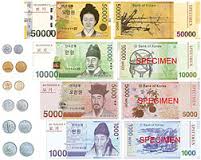What You Need To Know
Busan, officially Busan Metropolitan City, romanized as Pusan before 2000, is South Korea’s second-largest city after Seoul, with a population of approximately 3.6 million. The population of the metropolitan area, including the adjacent cities of Gimhae and Yangsan, is approximately 4.6 million. The city is located on the southeastern-most tip of the Korean peninsula. Located within South Korea’s largest industrial area, “The Southeast Economic Zone” (which includes Busan, Ulsan and South Gyeongsang Province), the city is the cultural, educational and economic center of the region. It is the largest port city in South Korea and the world’s fifth busiest seaport by cargo tonnage The most densely built up areas of the city are situated in a number of narrow valleys between the Nakdong River and the Suyeong River, with mountains separating most of the districts. Administratively, it is designated as a Metropolitan City. The Busan metropolitan area is divided into 15 major administrative districts and a single county. Busan was the host city of the 2002 Asian Games and the APEC 2005 Korea. It was also one of the host cities for the 2002 FIFA World Cup, and is a center for international conventions in Korea. On November 14, 2005, the city authorities officially announced its bid to host the 2020 Summer Olympics Games. After Pyeongchang’s successful bid for the 2018 Winter Olympics, Busan is considering bidding to host the 2028 or 2032 Summer Olympics. Busan has Korea’s largest beach and longest river, and is home to the world’s largest department store, the Shinsegae Centum City.
Area: 767.4 km²
Population: Estimate 3.6 million
Currency
-
The won (/wɒn/; Korean: 원; symbol: ₩; code: KRW) or the Korean Republic Won is the currency
 of South Korea. A single won is divided into 100 jeon, the monetary subunit. The jeon is no longer used for everyday transactions, and appears only in foreign exchange rates
of South Korea. A single won is divided into 100 jeon, the monetary subunit. The jeon is no longer used for everyday transactions, and appears only in foreign exchange rates .
.
Arts
Economy
Busan is an international business and financial center and renowned for its machinery, steel, ship building and marine industries, fashion, tourism and TRADE
 fairs. Busan is the fifth busiest seaport in the world, with transportation and shipping among the most high profile aspects of the local economy. Since 1978, Busan has opened three container ports including Jaseungdae, Shinsundae, and Gamman. Busan has one of the world’s largest ports and can handle up to 13.2 million TEU shipping containers per year. The Busan-Jinhae Free Economic Zone Authority, one of two such administrations in Korea, was created to reassert Busan’s status as a traditional international trading
fairs. Busan is the fifth busiest seaport in the world, with transportation and shipping among the most high profile aspects of the local economy. Since 1978, Busan has opened three container ports including Jaseungdae, Shinsundae, and Gamman. Busan has one of the world’s largest ports and can handle up to 13.2 million TEU shipping containers per year. The Busan-Jinhae Free Economic Zone Authority, one of two such administrations in Korea, was created to reassert Busan’s status as a traditional international trading
 centre. The port attracts ships from all over the globe and the surrounding area aspires to become a regional financial centre. Korea Exchange (KRX), Korea’s sole securities exchange operator, is headquartered in Busan. Busan is the home of the headquarters of Renault Samsung Motors, Hanjin Heavy Industries, Busan Bank, Air Busan, HiINVESTMENT
centre. The port attracts ships from all over the globe and the surrounding area aspires to become a regional financial centre. Korea Exchange (KRX), Korea’s sole securities exchange operator, is headquartered in Busan. Busan is the home of the headquarters of Renault Samsung Motors, Hanjin Heavy Industries, Busan Bank, Air Busan, HiINVESTMENT & Securities, Woori Aviva Life Insurance, Korea Technology Finance Corporation, Korea Asset Management Corporation, Korea Housing-Finance Corporation, Korea Securities Depository, Korea Housing Guarantee Company, Korea Southern Power Company, BNK Financial Group. Jagalchi Fish Market is the largest fish market in Korea. Busan is ranked the fourth best city after Singapore, Seoul and Tokyo among Asia’s top convention cities in a 2011 global ranking by the International Congress and Convention Association (ICCA).
& Securities, Woori Aviva Life Insurance, Korea Technology Finance Corporation, Korea Asset Management Corporation, Korea Housing-Finance Corporation, Korea Securities Depository, Korea Housing Guarantee Company, Korea Southern Power Company, BNK Financial Group. Jagalchi Fish Market is the largest fish market in Korea. Busan is ranked the fourth best city after Singapore, Seoul and Tokyo among Asia’s top convention cities in a 2011 global ranking by the International Congress and Convention Association (ICCA).
Hot spring resorts and spas
Busan has the largest hot spring resorts and facilities in Korea.
- Spa Land (Haeundae-Gu)
- HurShimChung Hot Spring Resorts and Spa Town (Dongnae-Gu)
- Haeundae Hot Spring Resorts and Spa Towns (Haeundae-Gu)
- Dongnae Hot Spring Resorts and Spa Towns (Dongnae-Gu)
- Gwangalli Spa Towns (Suyeong-Gu)
Language
Health
South Korea has the world’s third highest health adjusted life expectancy after Japan and Singapore and 11th highest life expectancy overall in the world. South Korea maintains an affordable and accessible universal healthcare system that is rated as the world’s fourth most efficient healthcare system as of 2016 after Hong Kong, Singapore and Spain by Bloomberg.
Religion
Religion in Busan (2005)
Not religious (43{19cdc5bd764fae2b67e11f3176b4a92c785a5d2cc6512d6a350aa505a230619d})
Buddhism (39.2{19cdc5bd764fae2b67e11f3176b4a92c785a5d2cc6512d6a350aa505a230619d})
Protestantism (10.4{19cdc5bd764fae2b67e11f3176b4a92c785a5d2cc6512d6a350aa505a230619d})
Catholicism (7.4{19cdc5bd764fae2b67e11f3176b4a92c785a5d2cc6512d6a350aa505a230619d})
According to the census of 2005, of the people of Busan 39.2{19cdc5bd764fae2b67e11f3176b4a92c785a5d2cc6512d6a350aa505a230619d} follow Buddhism and 17.8{19cdc5bd764fae2b67e11f3176b4a92c785a5d2cc6512d6a350aa505a230619d} follow Christianity (10.4{19cdc5bd764fae2b67e11f3176b4a92c785a5d2cc6512d6a350aa505a230619d} Protestantism and 7.4{19cdc5bd764fae2b67e11f3176b4a92c785a5d2cc6512d6a350aa505a230619d} Catholicism). 43{19cdc5bd764fae2b67e11f3176b4a92c785a5d2cc6512d6a350aa505a230619d} of the population is mostly not religious or follow other indigenous religions.
Transport
Air
Busan is served by Gimhae International Airport in Gangseo-gu. Gimhae International Airport is connected by Busan-Gimhae Light Rail Transit
Bus
Major express bus lines link Busan with other cities in Korea at two primary bus terminals, Nopodong Bus Terminal (at the northern terminus of Subway Line 1) and Seobu Bus Terminal at Sasang Station on Subway Line 2. 134 routes of urban buses service every part of Busan Metropolitan City. (Busan Urban Bus)
Sea
National railway
Busan lies on a number of rail lines, of which the mostIMPORTANT is the Gyeongbu Line which connects it to other major cities such as Seoul, Daejeon, and Daegu. All classes of trains run along the Gyeongbu Line, including the superhigh speed KTX trains which provide frequent services to Seoul in approximately 150 minutes. The Gyeongbu Line terminates at Busan Station. Other lines include the Donghae Nambu Line which connects Ulsan, Pohang and Gyeongju.
is the Gyeongbu Line which connects it to other major cities such as Seoul, Daejeon, and Daegu. All classes of trains run along the Gyeongbu Line, including the superhigh speed KTX trains which provide frequent services to Seoul in approximately 150 minutes. The Gyeongbu Line terminates at Busan Station. Other lines include the Donghae Nambu Line which connects Ulsan, Pohang and Gyeongju.
Subway
Weather
Located on the south easternmost tip of the Korean Peninsula, Busan has a cooler version of a humid subtropical climate (Köppen climate classification Cwa). Extremely high or low temperatures are rare. May to July, late Springs and early Summers, are usually cooler than inland regions because of the ocean effect. Late Summer, and early Autumn, August and September, are generally hot and humid and the city may experience typhoons at that time and be generally rainy. On September 15, 1959, Super Typhoon Sarah passed by the coast of the city and caused catastrophic damage. An unusually severe storm on September 12, 2003, Typhoon Maemi, also caused damage to ships and buildings and resulted in over 48 fatalities. October and November are generally the most comfortable, with clear skies and pleasant temperatures. Winters are cold and comparatively dry with high winds, but much milder than other parts of Korea except Jeju-do and several islands off the southern coast. Busan and the nearby area has the least amount of snow compared to other regions of Korea due to its location. Snow falls on an average of only about 6 days per year. Even a little accumulation of snow can effectively shut down this seaport city because of the hilly terrain and unfamiliarity of motorists with driving on snow.











